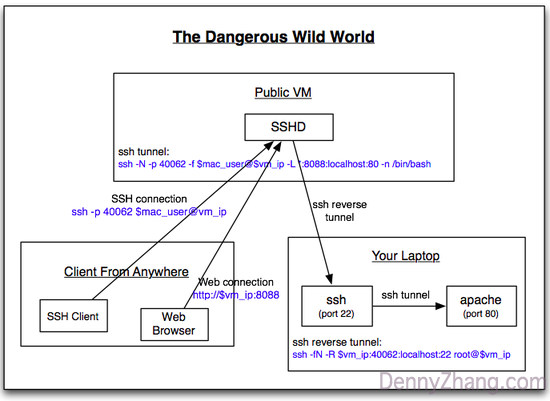
The user account Im using on the server is called 'ksproxy' (its not really a 'proxy' but whatever).

Given that, this count of 6 rpi's can go upto 20 or 30 in future. I managed to create a reverse SSH tunnel between a Raspberry Pi 2 and a server of mine (server which has a static IP) and it works fine. Now I need to know if this the right approach to solve this use case.

But when I try to connect more devices, The tunnel doesn't seem to be connecting(i.e) Tunnel established from rpi, but nothing on netstat -lnpt on the cloud server. autossh -Nf -M 0 -o ServerAliveInterval=120 -o ServerAliveCountMax=3 -R 2101:127.0.0.1:22 works fine, for my 6 devices.

Any connections coming into the server on port 2222 forward them over the tunnel back to the. Upon doing so, it’s telling that server to open port 2222. The Pi is ssh’ing to the server at 25.25.25.25 using the username serverUser. I started a systemd to do this operation. Here look at this command you would issue from the Pi: ssh -N -R 2222:localhost:22 serverUser25.25.25.25. Initially, I used direct SSH command's, but I ran into issues like, the connection becomes stale and unresponsive after a period of time. Step4 : SSH into your RaspberryPi from the internet using the following command. socketxp -connect tcp://localhost:22 Tunnel Access -> :35277.
#AUTOSSH REVERSE TUNNEL RASPBERRY PI PASSWORD#
Step4: SSH into your RaspberryPi from the internet using the following command. It first ask for the server's password, then for the Pi's password and everything is fine. If you have a better solution, let me know.ĭieser Beitrag wurde am 17. Step3: Get a public tunnel endpoint to access your RaspberryPi from the internet. usr/bin/autossh -f -M 0 remote -l remoteuser -N -o "ServerliveInterval 60" -o "ServerAliveCountMax 3" -R LOCALPORT:localhost:PORT In the end I modified the bash script to use autossh. systemd: Starting reverse ssh tunnel.Īutossh: port set to 0, monitoring disabled Executing the command manually works fine. Looking at journalctl, I can see the exit but no reason. $ cat /etc/systemd/system/rviceĮxecStart=/usr/bin/autossh -f -M 0 remote -l remoteuser -N -o "ServerliveInterval 60" -o "ServerAliveCountMax 3" -R LOCALPORT:localhost:PORT I tried to get it working with systemd, but without any success. Aborting."īut I just found out about autossh. Ssh -Nf -R LOCALPORT:localhost:PORT "Tunnel already exists. #!/bin/bashĬOUNT=$(ps ax | grep 'ssh -Nf -R' | wc -l) You can write a very simple script like this and use a cronjob to execute it. Since wifi is a little bit flaky, I need to make sure, that the ssh connection is reopened when there is a connection loss. Logged in on the server I can connect to a local port and get forwarded to the raspberry. The raspberry pi inside my home network connects to my public server via ssh. The simplest solution was to create a reverse ssh tunnel.

#AUTOSSH REVERSE TUNNEL RASPBERRY PI FULL#
I don’t need a full vpn solution, but sometimes I just want to ssh home to check a file etc. My ISP started to roll out broken IPv6 for home users, so my services aren’t available from outside anymore.


 0 kommentar(er)
0 kommentar(er)
